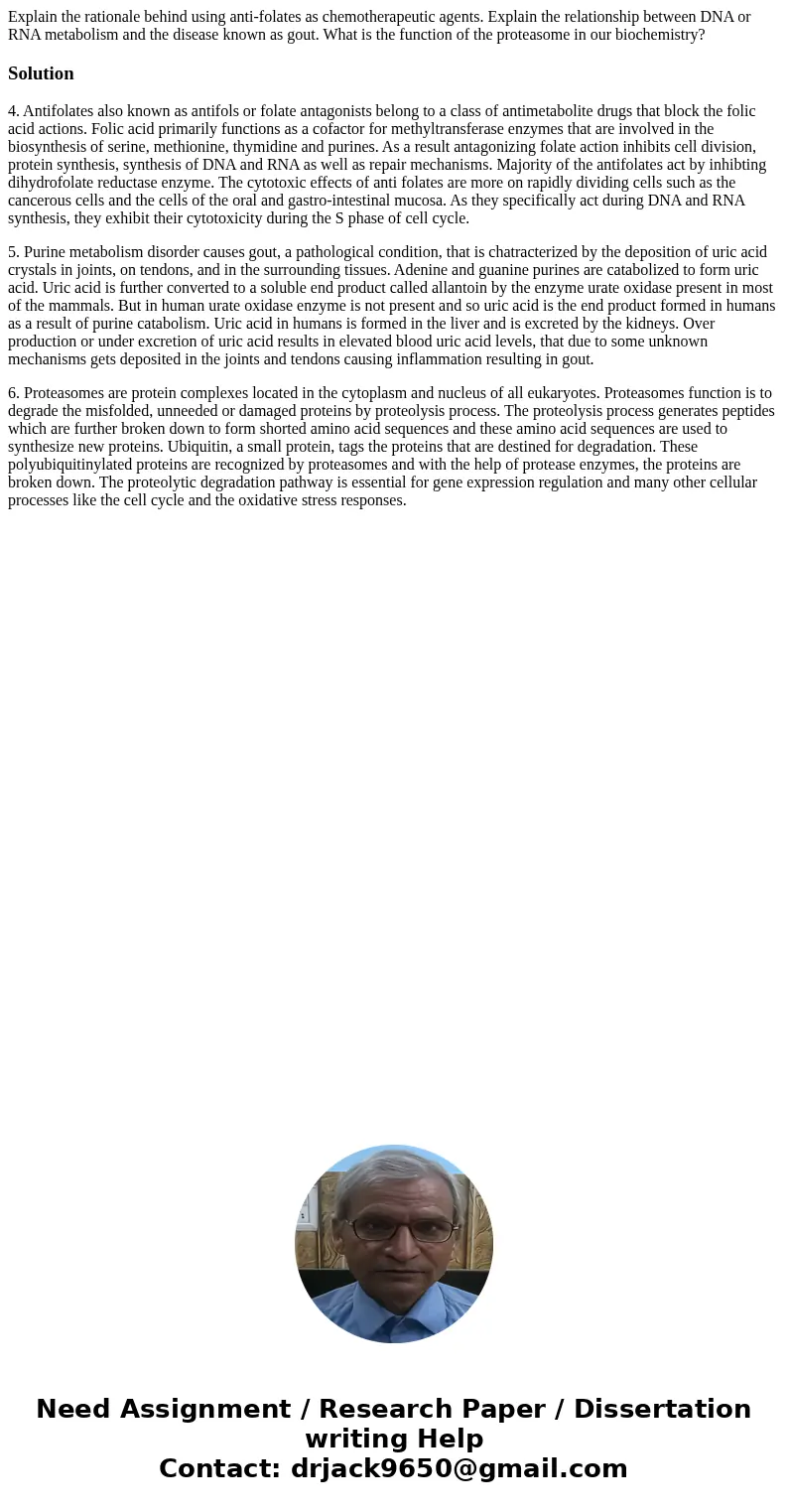Explain the rationale behind using antifolates as chemothera
Solution
4. Antifolates also known as antifols or folate antagonists belong to a class of antimetabolite drugs that block the folic acid actions. Folic acid primarily functions as a cofactor for methyltransferase enzymes that are involved in the biosynthesis of serine, methionine, thymidine and purines. As a result antagonizing folate action inhibits cell division, protein synthesis, synthesis of DNA and RNA as well as repair mechanisms. Majority of the antifolates act by inhibting dihydrofolate reductase enzyme. The cytotoxic effects of anti folates are more on rapidly dividing cells such as the cancerous cells and the cells of the oral and gastro-intestinal mucosa. As they specifically act during DNA and RNA synthesis, they exhibit their cytotoxicity during the S phase of cell cycle.
5. Purine metabolism disorder causes gout, a pathological condition, that is chatracterized by the deposition of uric acid crystals in joints, on tendons, and in the surrounding tissues. Adenine and guanine purines are catabolized to form uric acid. Uric acid is further converted to a soluble end product called allantoin by the enzyme urate oxidase present in most of the mammals. But in human urate oxidase enzyme is not present and so uric acid is the end product formed in humans as a result of purine catabolism. Uric acid in humans is formed in the liver and is excreted by the kidneys. Over production or under excretion of uric acid results in elevated blood uric acid levels, that due to some unknown mechanisms gets deposited in the joints and tendons causing inflammation resulting in gout.
6. Proteasomes are protein complexes located in the cytoplasm and nucleus of all eukaryotes. Proteasomes function is to degrade the misfolded, unneeded or damaged proteins by proteolysis process. The proteolysis process generates peptides which are further broken down to form shorted amino acid sequences and these amino acid sequences are used to synthesize new proteins. Ubiquitin, a small protein, tags the proteins that are destined for degradation. These polyubiquitinylated proteins are recognized by proteasomes and with the help of protease enzymes, the proteins are broken down. The proteolytic degradation pathway is essential for gene expression regulation and many other cellular processes like the cell cycle and the oxidative stress responses.

 Homework Sourse
Homework Sourse